2013
Type of resources
Available actions
Topics
Keywords
Contact for the resource
Provided by
Years
Formats
Representation types
Update frequencies
Service types
Scale
Resolution
-
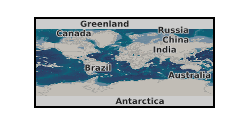
UKCCSRC Call 1 Project (C1-27) - 'Experimental investigation with PACT facility and CFD modelling of oxy-coal combustion on recycling real flue gas and vent gas of compression and purification units' - Methodologies and Data
-
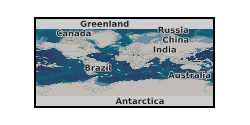
This report has been superseded by the paper: https://www.sciencedirect.com/science/article/pii/S1750583617301081. Grant number: UKCCSRC-C1-31. The NERC-funded QICS controlled CO2 release experiment (located offshore Oban, Scotland) mimics the formation of a new CO2 seep in the marine environment. At the site, CO2 is injected at an onshore well head, and a stainless steel pipe transports the CO2 under the seabed. Approximately 350 m offshore, the CO2 is released through a perforated screen into the 12 metres of overlying marine sediment, which is at approximately 10 metres water depth. During spring/summer 2012, 4.2 tonnes of CO2 was released at the QICS experimental site. A key element of risk assessment for the subsurface storage of CO2 is the monitoring of leaks from the subsurface in to the marine or terrestrial environments via sediments and soils. Chemical 'fingerprinting' of injected CO2 is widely considered a low cost, highly effective monitoring option, since effective application of tracers in CCS could provide information on (i) the movement, interaction and fate of injected CO2 in the subsurface and (ii) the detection (and quantification) of CO2 that has leaked from the storage complex to the surface. There is a need to develop geochemical techniques to differentiate between CO2 from natural processes, and the QICS site may provide excellent opportunity to trial geochemical tracers. This work aims to determine which chemical tracers are most suitable for CO2 tracing at the QICS facility and the research questions that tracer application can address. As such, this report includes: i. A review of current potential chemical tracers for CCS and their applications. ii. An analysis and comparison of costs, availability, environmental impact and detection limits for potential tracers. iii. An assessment of the above in the context of QICS (i.e: considering the CO2 will be released from the seabed (having passed from dense to gas phase), and having passed through water saturated sediment of the seabed, and into the water column. iv. An overview of the legal considerations for tracers in the UK. v. The injection method for tracers at the QICS site. vi. Required strategies for sampling the selected tracer. vii. Identify knowledge gaps in tracer studies which experiments at the QICS site could address.
-
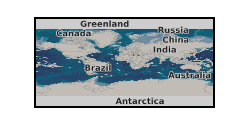
This presentation on the UKCCSRC Call 1 project, Flexible CCS Network Development, was presented at the Workshop1, 30.04.14. Grant number: UKCCSRC-C1-40.
-
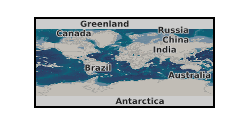
This poster on the UKCCSRC Call 1 project, UK Bio-CCS CAP, was presented at the Cranfield Biannual, 22.04.15. Grant number: UKCCSRC-C1-38.
-
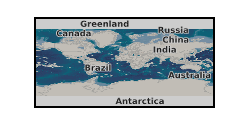
The NERC-funded QICS controlled CO2 release experiment (located offshore Oban, Scotland) mimics the formation of a new CO2 seep in the marine environment. At the site, CO2 is injected at an onshore wellhead, and a stainless steel pipe transports the CO2 under the seabed. Approximately 350 m offshore, the CO2 is released through a perforated screen into the 12 metres of overlying marine sediment, which is at approximately 10 metres water depth. During spring/summer 2012, 4.2 tonnes of CO2 was released at the QICS experimental site. In order to establish stakeholder views on the research priorities for the site, consultations for three 'audiences' were performed via online questionnaires. These 'audiences' were: 1. QICS research community: Researchers actively involved in the QICS project were asked to complete an online questionnaire. The questionnaire aimed to gather participants' reflections of the QICS CO2 injection experiment in Summer 2012, and also to consult on the scientific priorities for possible future activity at the site. 2. CCS (storage) research community: The international CCS research community (specifically, researchers working on aspects of CO2 storage) were consulted via an online questionnaire distributed by the IEAGHG storage network mailing list in June 2013. The survey aimed to gather their reflections of the QICS project, and to consult on the scientific priorities for possible future activity at the site. The survey had 24 respondents with a broad range of expertise and representing both industry and research organisations from 10 countries. 3. Technology industry: Technology industries were consulted via an online questionnaire. The survey aimed to gather consult on the scientific priorities for science and technology development at possible future activity at the site, and also to scope potential interest from technology developers. For each of these consultations there is a report (presenting a synthesis of the survey responses) and also the dataset for all three surveys. All of these files are confidential. Grant number: UKCCSRC-C1-31.
-
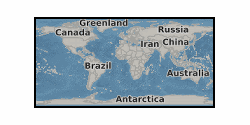
Controlled CO2 release experiments and studies of natural CO2 seeps have been undertaken at sites across the globe for CCS applications. The scientific motivation, experimental design, baseline assessment and CO2 detection and monitoring equipment deployed vary significantly between these study sites, addressing questions including impacts on benthic communities, testing of novel monitoring technologies, quantifying seep formation/style and determining CO2 flux rates. A review and synthesis of these sites studied for CCS will provide valuable information to: i. Enable the design of effective monitoring and survey strategies ii. Identify realistic site-specific environmental and ecosystem impact scenarios iii. Rationalise regulatory definitions with what is scientifically likely or achievable iv. Guide novel future scientific studies at natural or artificial release sites. Two global databases were constructed in Spring 2013, informed by a wide literature review and, where appropriate, contact with the research project leader. i. Artificial CO2 release sites ii. Natural CO2 seeps studied for CCS purposes The location and select information from each of these datasets are intended to be displayed as separate GoogleMap files which can be embedded in the QICS or UKCCSRC web server. These databases are not expected to be complete. Information should be added as more publications or become available or more case studies emerge or are set up. To facilitate this process, a contact email should be included beneath the map to allow viewers to recommend new or overlooked study sites for the dataset. Grant number: UKCCSRC-C1-31. These data are currently restricted.
-
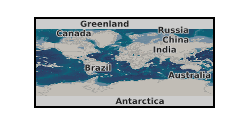
This presentation on the EPSRC project, Fingerprinting captured CO2 using natural tracers: Determining CO2 fate and proving ownership, was presented at the Cranfield Biannual, 21.04.15. Grant number: EP/K036033/1.
-
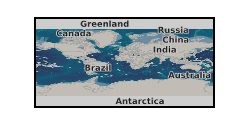
This data contains the output from the first Flexible CCS Network Development (FleCCSnet) workshop of stakeholders discussing the development of CO2 networks in the UK. The first was held on the 30 April 2014 at the University of Edinburgh, UK. The purpose of Workshop 1 was to identify and confirm the key questions to be considered in order to understand the most likely impacts of variability in the CO2 sources and variability in CO2 sinks on CO2 transport system design and operation. There were a total of 21 attendees including 7 representatives from PSE, Scottish Power, BP, SCCS, Parsons Brinckerhoff, Element Energy, and AMEC. The dataset consists of two reports. The first report, 'Developing CO2 networks: Key lessons learnt from the first Flexible CCS Network Development (FleCCSnet) project workshop', summarises the workshop findings, which have been used to create a series of scenarios that were investigated by transient simulation. The scenarios developed are described in the second report, 'Developing CO2 networks: Scenarios building on the first Flexible CCS Network Development (FleCCSnet) project workshop'.
-
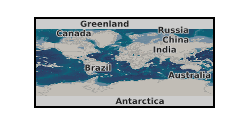
This poster on the UKCCSRC Call 1 project, Mixed Matrix Membrane Preparation for PCC, was presented at the Nottingham Biannual, 04.09.13. Grant number: UKCCSRC-C1-36.
-
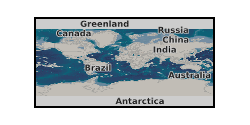
This poster on the UKCCSRC Call 1 project Tractable equations of state for CO2 mixtures in CCS was presented at the CSLF Call project poster reception, London, 27.06.16. Grant number: UKCCSRC-C1-22. A potential bottle-neck for CCS is the transport of CO2 from power plants to the storage location, by pipeline. Key to safe and inexpensive transport is a detailed understanding of the physical properties of carbon dioxide. However, no gas separation process is 100% efficient, and the resulting carbon dioxide contains a number of different impurities. These impurities can greatly influence the physical properties of the fluid compared to pure CO2. They have important design, safety and cost implications for the compression and transport of carbon dioxide. This project aimed to develop new methods to produce custom models (equations of state) for impure CO2 behaviour for CCS.
 NERC Data Catalogue Service
NERC Data Catalogue Service